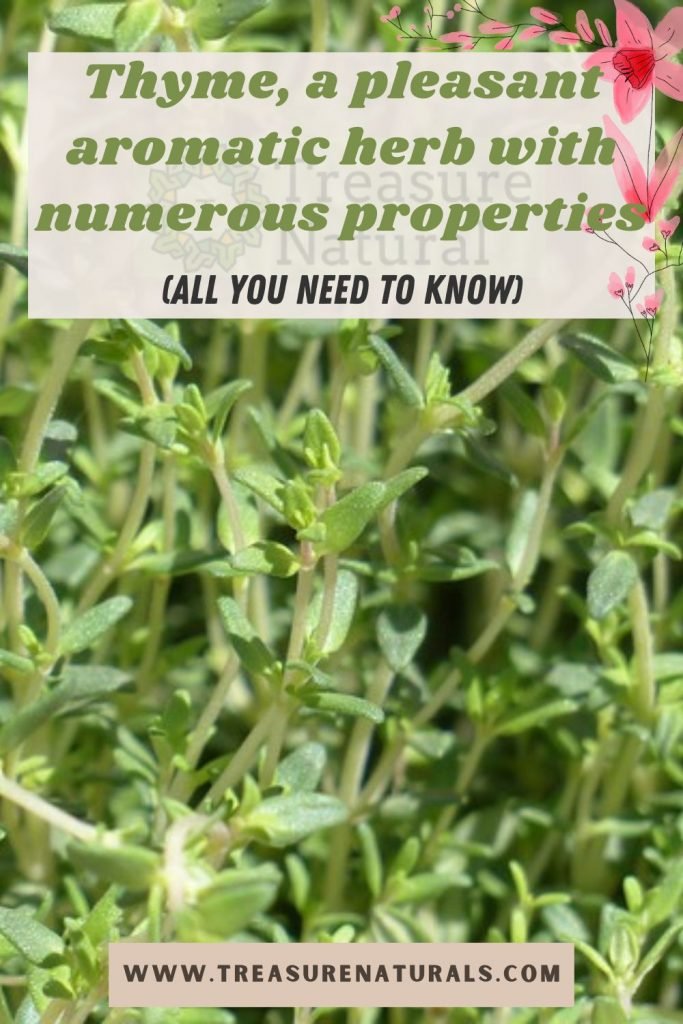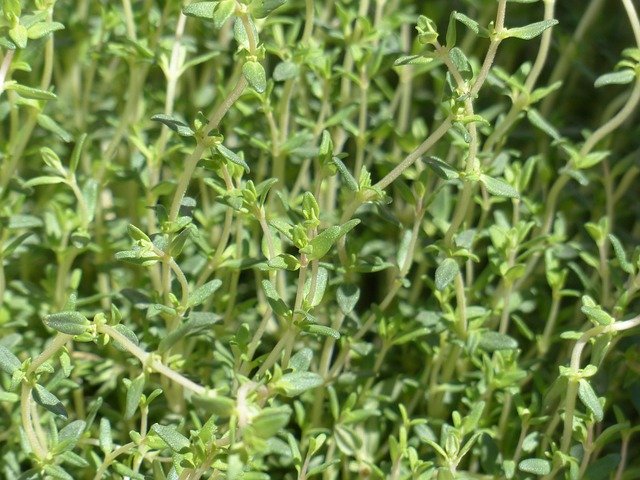
Wild thyme is a plant that has always been used for medicinal purposes, as well as to flavor dishes. It is in fact a powerful antiseptic, antispasmodic and vermifuge, useful for fighting respiratory diseases and for promoting digestive processes.
Let’s get to know it better and discover all its properties
Wild thyme, plant
Wild thyme (scientific name Thymus serpyllum) is a perennial aromatic plant belonging to the Lamiaceae family. Native to Europe and North Africa, it is the most common variety of thyme in nature. It grows spontaneously in dry, stony and sunny soils. For this reason it can be easily found in the mountains, in the plains but also near the sea.
It is a perennial shrub that can reach a maximum of 40-50 cm in height and is characterized by a very branched woody stem, which gives shape to a dense bush. The small green leaves are very aromatic, and in the summer it produces delightful small purplish-pink flowers clustered in clumps.
Difference between thyme and wild thyme
Wild thyme is a spontaneous aromatic plant known by many names such as pepolino, pipernia or wild thyme. Although it is often called more simply thyme, it is actually a plant similar to the common thyme, but very different in terms of appearance, color of the flowers and more bitter taste.
Widely used in herbal medicine, wild thyme differs from common thyme for the proportion of the active ingredients contained which, even within the same species, varies considerably.
Where does wild thyme grow?
Native to Europe and North Africa, it is the most common variety of thyme in nature.
Wild thyme cultivation
The propagation of this plant can take place:
- by division of the tufts in March April
- for sowing in spring
- by cuttings of lateral shoots taken in May-June
This aromatic plant lends itself well to growing in pots.
How to plant wild thyme
Ideal as an ornamental plant in rock gardens, wild thyme prefers calcareous, humid, but well-drained, permeable and light soils. Likes a temperate climate and sunny locations. It does not fear scorching heat and is also resistant to intense cold, frosts and drafts.
Having excellent resistance to drought, it is generally satisfied with rainwater, but it is recommended to water the plant especially in the first period of life and during the hottest and driest months. It does not require special fertilization, however, to promote better growth, it may be useful to use a fertilizer rich in nitrogen and potassium. Wild thyme does not need pruning, only the removal of dry and damaged vegetation. This is mainly to avoid the onset of possible diseases.
Diseases and parasites
Wild thyme can be prone to attack by pests and diseases. Being an edible plant used in cooking to flavor dishes and soups, the use of pesticides and chemicals is not recommended.
Wild thyme flowering
Wild thyme flowers are small, gathered in dense buds, and varying in color from white to pink to violet. On average, flowering lasts about a month, in a period that can vary between April and September, depending on the climatic conditions.
Ground cover wild thyme
This plant requires very little care and for this reason some even consider it “walkable”. It is therefore often used as a colored and fragrant ground cover in gardens as an alternative to the classic grass lawn.
Wild thyme, properties
It is a plant with numerous therapeutic and aromatic properties. Its leaves and flowers are rich in vitamin A and vitamin C, stimulate the appetite and, in general, make an excellent supplement.
The main constituents of the virtues are represented by phenols, especially thymol and carvachlor, present in the plant in different percentages. Other very useful active ingredients are cymol, linalool and luteolin.
The parts used by the plant are the flowering tops. The uses that can derive from it are the most varied. Very famous are the infusions of thyme, with a calming action for the cough and rebalancing the digestive system.
Specifically, medicine recognizes the following properties:
- antiseptics
- stimulants
- antispasmodic
- diuretic
- emmenagogues
What is wild thyme used for?
Wild thyme infusion is mainly used for digestive problems. It is therefore great for reducing flatulence, relieving hangovers and headaches. In addition, it stimulates digestion and blood circulation, and is also used effectively to treat acne, skin rashes and genital infections such as candida.
Essential oil, among other things, is an effective repellent against mosquitoes, fleas, lice, mites and cockroaches. Given the high concentration of active ingredients, it is recommended to dilute it appropriately.
Wild thyme herbal tea
Let’s see how to prepare an excellent wild thyme herbal tea. Use 2 grams of herb for every 150ml of boiling water. Leave to infuse for about 10 minutes and then filter. Drink 2-3 cups a day.
Wild thyme in the kitchen
Wild thyme has a rather intense flavor and for this reason it is used, at the end of cooking, as a spice to flavor dishes based on meat, fish, tomato-based dishes, vegetables, mushrooms and pizzas. It goes very well with potatoes, peas and beans, and is therefore ideal added to soups based on these legumes.
Since the aroma of this aromatic plant is quite intense, it is advisable to add it gradually and in moderation, so that it does not cover the other flavors. Furthermore, it should be added when it is almost cooked as, if it were subjected to the cooking process, it would lose all its properties.
Wild thyme also goes very well with other spices and aromatic herbs, especially with parsley, marjoram and bay leaf.
Wild thyme, liqueur
The liqueur prepared with this fragrant aromatic herb is tasty and truly delicious. Let’s see how to prepare it.
Ingredients
- 100 gr of alcohol at 90 °
- 150 gr of water
- 100 grams of sugar
- 20 g of already cleaned wild thyme
Method
- Wash well and dab the various twigs
- Place the leaves in a container with a lid and add the alcohol
- Close the jar and let it macerate for at least 20 days in a dry place, remembering to shake the jar a little at least once a day
- After the maceration period, filter the liqueur using a tightly woven sieve
- Meanwhile, prepare the syrup by placing a saucepan with water and sugar on the stove. When the sugar has completely dissolved, turn off and let it cool
- Add the prepared syrup to the alcohol
- Filter again and bottle
For an excellent tasting of the final product, wait a few days. The liqueur should be stored in a cool and dry place.
Contraindications
No particular type of problem was encountered, with the exception of people who are idiosyncratic or allergic to Lamiaceae. Additionally, people sensitive to birch and celery pollen may have a cross allergy to thyme. Furthermore, it can cause diathesis in people sensitive to thymol.
Finally, its use is not recommended during pregnancy, breastfeeding, and for those who suffer from high blood pressure.
Where to buy

It is found in herbal medicine but also online. You can buy the seeds to plant but also the herb itself, dried or in the form of essential oil.






